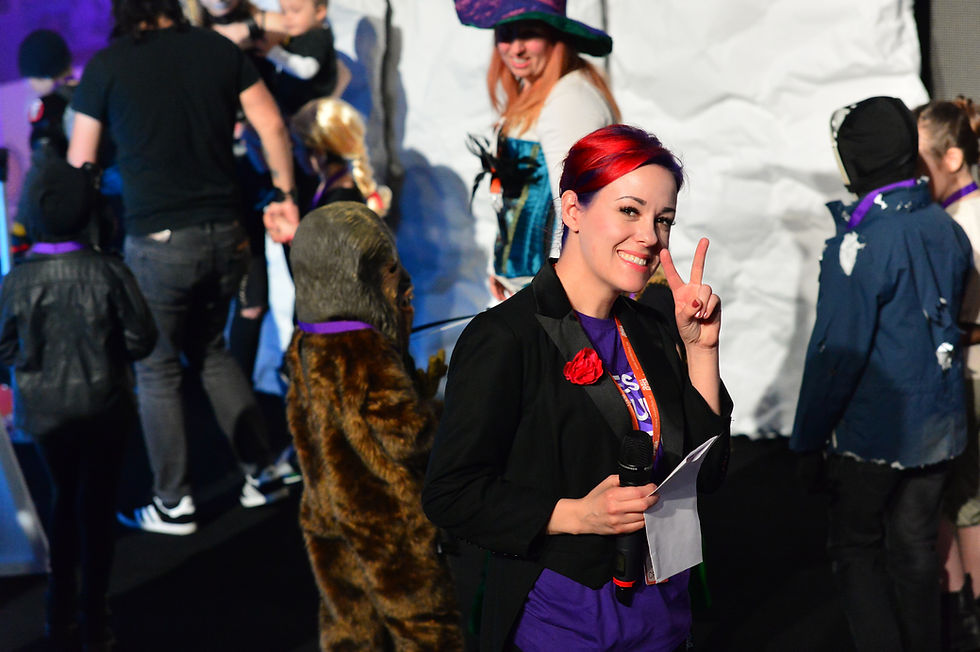Let’s talk about burnouts in the video games industry
- The Goose

- Mar 30, 2022
- 3 min read
Updated: Aug 24, 2022
"The hardest thing I've been through as a game developer is a burnout." Sofie Wikström, Art Director of The Station - A Thunderful Studio, with 13 years of experience working in videogames. She speaks honestly about the eye-opening experience that taught her the importance of balancing her passion for work with her mental health.
Working in video games is a dream and a passion for many professionals, but it is not all fun and games. Sofie Wikström thinks it is crucial to speak openly about the challenges. In her upcoming talk at Friday Stories, she will share her full-blown creative burnout experience: what happens to you and how to handle it.

“I never planned to work in the games industry”
“I was planning on becoming an engineer and studying in Gothenburg on a program to become a math genius.” But Sofie Wikström always drew and loved art, so the math program in Gothenburg became a 2-year education in 3D graphics and conceptual art at the School of Future Entertainment. However, a videogames career wasn’t really her dream, nor was it on her map.
In 2008, while looking for internships as a 3D artist, a fortunate event launched her into the videogame industry. Sofie was rejected in many internships, but she and 4 other colleagues won the Game Concept Challenge competition, getting financial support, under an incubator, to open a game company. Thus, she became the only artist in her educational games studio and shared office space with Tarsier Studios (one of the companies that had formerly turned down her internship application).
Two years later, the Game Concept Challenge project ended. But now, she was an experienced artist, and thanks to her lunches with the Tarsier Studios’ people, she ended up working as a concept artist for them.
“I still didn’t think seriously about a career in videogames. For me, it was just getting paid for a little bit longer.”
But it was more than that. This opportunity brought her to the project that gave Sofie her biggest success and hardest challenge: LittleBigPlanet
Pressure and Passion: two faces of the video game production
“Nowadays, I'm the person who has the most cumulative experience in the LittleBigPlanet franchise because I've been on it since 2009. No other person has been on it for that long, and we're still producing DLC content. I have been involved in the design of like 600 costumes.” It’s a project that changed Sofie Wikström as a person and as an artist because it uncovered her passion for video games and consolidated a successful 13-year career.
However, with an impactful experience as LittleBigPlanet, it isn’t always smooth sailing. The project LittleBigPlanet Vita was a scary, passionate and interesting experience where she learned a lot and had tons of fun. But it also put a lot of pressure on the team. They had a lot to do in a very short time, so she also started putting too much pressure on herself.
“I'm very passionate about my work, and I think it's easy to become a workaholic and work around the clock. During the worst part, I couldn't be creative anymore, and, for a person who's been creative all their life, that's sort of a death sentence because you feel inadequate. I felt like there was nothing I could do.”
Burnout: a silent enemy
After LittleBigPlanet Vita, the studio was divided, and she moved to The Station - A Thunderful Studio. Although Sofie was burnt out and had many of its symptoms during project Vita, she wasn’t aware of it. “I had full-blown panic attacks at home. I was super shy about going outside. I used to have a hard time going to the store alone or taking the bus. All of this was caused by my anxiety, and I didn't know that.”
Months later, she looked for professional support, and it helped her to conclude that “in essence, my issue stemmed from having to put hard pressure on myself. My standards were way too high. So, I could try to blame it on the outside, like home or work situations, but it's easy to say no to those factors. The hardest problem is the pressure and demand for high-quality work that I put on myself. That's always a dangerous situation if you don't handle it correctly.”
It has taken Sofie 4 years to overcome the burnout, and to this day, she has to be extra careful about what she does or how she handles things, always listening to her body and mind.
You can read her tips for finding balance over at this blog:
Listen to Sofie's upcoming talk on Friday!
Grab your ticket over here: https://www.eventbrite.se/e/the-challenges-of-staying-creative-in-a-high-pressure-profession-tickets-272054982777






Comments